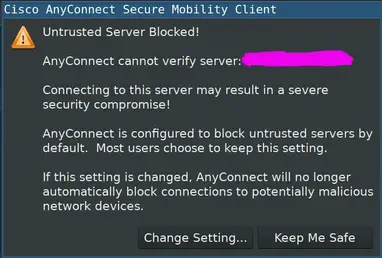Cisco VPN client in Linux. Connecting to a network using Cisco VPN is quite easy. I’ve got it with Fedora 7, but I suppose the steps are the same regardless the distribution you are using. The first step is to install a Cisco compatible VPN client. Cisco has a client, but there’s a free alternative called vpnc. To install it in Fedora, just.
- As Vpn Client Cisco Linux Download more and more governments spy on their citizens, Vpn Client Cisco Linux Download ISP´s sell your browsing history and hackers try to steal your information or your Bitcoin - you need to protect yourself with a encrypted VPN connection when you access the internet. We give you a market overview as well as a serious guide on which companies to choose and which.
- Cisco Anyconnect Secure Mobility client; Cisco Anyconnect VPN client is what it says: a VPN client that the end-user can download and install on an end-point device such as a PC, laptop or tablet. There are several versions for Windows, Linux, Mac, and Android and even versions that support installation on Apple iPhone, iPad and iPod.
Topics Map > Networking > Virtual Private Networking (VPN)
This page contains links to download and installation instructions for VPN software for Linux. Office 2016 for mac activation with product key.
University of Illinois students, faculty, and staff can use these directions to set up some Linux computers or devices to connect to the Virtual Private Network (VPN).
Cisco-supported Versions
Some versions of Red Hat Linux and Ubuntu are compatible with the Cisco AnyConnect VPN client. See the AnyConnect 4.8 Release Notes for a detailed listing of which versions and features are supported.

Downloading the VPN software
From the WebStore, download the VPN software that applies to your system's hardware (only 64 bit is supported in the 4.x software).
If you are using Ubuntu, you may also need to install the OpenConnect Network Manager in order to make the GUI work correctly:
for Ubuntu 16 try:
for older versions of Ubuntu, this command might be needed.
The information below has been modeled on the University of California at Irvine instructions provided at:
Additional troubleshooting tips are available there.

Red Hat Linux
As root, first unzip and untar the file, then run the vpn_install shell script. Download game pc avatar the legend of aang. [Note the file name and directory name will change as the version changes. The example below was from version 4.3.05017.]
The vpn client will be installed on your system and the vpnagentd process will be started. This process will be started each time your system is booted.
Starting the VPN client
To start the VPN client:
Command line:
In a terminal window, type/opt/cisco/anyconnect/bin/vpnuiGnome user interface:
Look for Cisco AnyConnect in the menu system.- Fedora:
Look in Applications -> Internet
The Connect to: box appears.
- Enter vpn.illinois.edu and press return.
When the connection begins, enter the following:
- Group menu: Select 1_SplitTunnel_Default
(Note: This is the most common choice. See About VPN Profiles for information about the alternatives, such as Tunnel All for access to library resources.) - Username: Your NetID
(or, if you're a guest, your guest ID) - Password: Your Active Directory password
(or, if you're a guest, your guest password)
In the box that appears, click Accept. Naruto english episode 1 season 1.
You are now ready to use your VPN connection.
Cisco Vpn Client Linux
Ubuntu
A good source to help with this: http://www.socsci.uci.edu/~jstern/uci_vpn_ubuntu/
First, extract the files and install as root:
Accept the license agreement when prompted.
Then install the Ubuntu Network Manager plugins (note, even with this package Ubuntu 16 does not support the GUI interface: see https://askubuntu.com/questions/760864/no-more-anyconnect-compatible-vpn-transport-in-ubuntu-16-04 for more information):
To configure the VPN using the Network Manager:
- Click on the 'Network Manager' icon in your System Tray on your desktop.
- In the menu that appears, go to VPN Connections -> Configure VPN
- Click Add.
- Choose Cisco AnyConnect Compatible VPN (openconnect) and click Create.
- Enter the following information:
- Connection name: Tech Services VPN
- Gateway: vpn.illinois.edu
- User name: Leave blank at this point.
- Click Save.
Cisco Client Linux Windows 10
Starting the VPN client
- Click on the 'Network Manager' icon in your System Tray on your desktop.
- In the menu that appears, go to VPN Connections and click Tech Services VPN.
- Click on the connection icon (two screens).
- Enter the following information:
- Group menu: Select 1_SplitTunnel_Default
(Note: This is the most common choice. See About VPN Profiles for information about the alternatives.) - Username: Your NetID
(or, if you're a guest, your guest ID) - Password: Your Active Directory password
(or, if you're a guest, your guest password)
- Group menu: Select 1_SplitTunnel_Default
- Click Login.
Free Cisco Client Download
sudo service network-manager restart
sudo service networking restart
Disconnecting the VPN client

- Click on the 'Network Manager' icon in your System Tray on your desktop.
- Go to VPN Connections -> Disconnect VPN.
